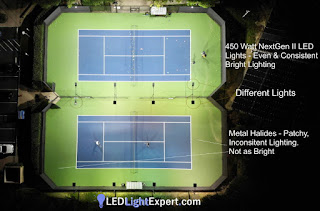Paramount Benefits Of LED Lighting In 2021.
LEDs have streaked the traditional lighting industry for several reasons, most remarkably their extended lifespans, eliminated power consumption, and reduced maintenance needs. The purchase price of lamps and fixtures pursues to fall, more and more facility managers are scrutinizing to improve their lighting systems with LEDs, given their various advantages compared to conventional technologies. Following is the list of advantages for everyone to consider:
Energy efficiency
LED lights use nearly 50 percent less power than customary incandescent, fluorescent, and halogen choices, proceeding in considerable energy cost savings, particularly for spaces with lights that are on for extended periods. LEDs also focus light in a particular direction unlike standard bulbs, which emit light and heat in all directions as LEDs are arranged on a flat surface, they release light hemispherically as a substitute to spherically. This directional lighting proficiency diminishes wasted light and energy.
Extended life
Unlike incandescent lighting, LEDs don’t burn out or fail, they simply dim with time. A usual incandescent bulb lasts only about 1,000 hours; in comparison to compact fluorescent bulbs that last 8,000 to 10,000 hours. With a longer functional life, Motion Sensor Warehouse Lights can eliminate labor costs of restoring bulbs in commercial situations, accomplishing a lower maintenance lighting system.
Cold temperature operation
LEDs like the cold, unlike traditional lamps. At low temperatures, elevated voltage is needed to start fluorescent lamps, and luminous flux that is the recognized power or intensity of light is decreased. In contrast to LED whose performance enhances as operating temperatures drop. This makes LEDs a natural fit for refrigerated showcases, freezers, and cold storage spaces in addition to outdoor systems such as the parking lot, building perimeter, and signage. DOE assessing of an LED refrigerated light is estimated usually to 5 percent higher efficacy that is the efficiency of a light source in lumens per watt,compared to operation at 25°C.
Durability
Without strands or glass enclosures, LEDs are deterioration resistant and largely exempt from vibrations and other impacts. Usually, conventional lighting contained in a glass or quartz exterior, which can be susceptible to vandalism whereas LEDs, tend not to use any glass, instead, they are scaled on a circuit board and connected with soldered leads that can be unsafe to direct impact, but no more so than smartphones and equal to small electronic devices.
Instant-on
Most fluorescent and HID lamps do not give full brightness the moment they’re switched on, with several requiring three minutes or more to reach the maximum light output. Parking Lot Light Coverage Area comes on at 100-percent illumination almost instantly,however; and with no re-strike delay. This can be fortunately following an energy outage or anytime employees open a building during early morning hours when it is still dark outside.
Rapid cycling
Typically, conventional light sources have a shorter lifespan the more they’re switched on and off, whereas Outdoor Led Flood Lights are unaffected by prompt cycling. Furthermore, to flashing light displays, this capability makes LEDs suitable for use with occupancy or daylight sensors.
Controllability
It can take more than several hundred dollars to make commercial fluorescent lighting systems dimmable, but LEDs, as semiconductor machines, are congenitally compatible with controls. Some LEDs can even be dimmed to 10 percent of light resultants while most fluorescent lights only extend about 30 percent of full brightness. LEDs alsooffer constant, against to step-level, dimming where the shift from 100-to-normally 10-percent light output is smooth and consistent and not tiered.
No IR or UV Emissions
Less than 10 percent of the energy used by incandescent lamps is normally converted to visible light; as most of the power is converted into infrared (IR) or radiated heat. Uncontrolled heat and ultraviolet radiation (UV) displays a burn hazard to people and materials. San Diego Led Lighting release virtually no IR or UV due to rapid development in LED lighting technologies, with more improvements on the horizon, have resulted in reduced costs and increased reliability of LEDs. And while it may be alluring to assume LEDs are the perfect choice for all applications because of their energy efficiency, selection should be based on a mixture of factors, including light quality, dimmability, distribution, and expected lifetime.
Nowadays, light can do so much more than brighten just a path as it can lighten our impact on the atmosphere, make our places more secure or enhance the comfort and productivity of any indoor space. Matching LED lighting with intelligent sensors and controls can help establish smarter, more sustainable solutions. Don’t wait and add this amazing solution to your home and office space.
For more info:- 1500 Watt Sports Lighter Led

Comments
Post a Comment